- Home
- Prelims
- Mains
- Current Affairs
- Study Materials
- Test Series
Feb 06, 2022
WORLD WETLANDS DAY CELEBRATED AT SULTANPUR NATIONAL PARK
Ministry of Environment, Forest and Climate Change on World Wetlands Day on 2022 stated that the government is taking affirmative action, involving communities and citizens, in halting and reversing wetlands degradation and loss.
 World Wetlands Day:
World Wetlands Day:
 Heatwaves and Marine Heatwaves?
Heatwaves and Marine Heatwaves?
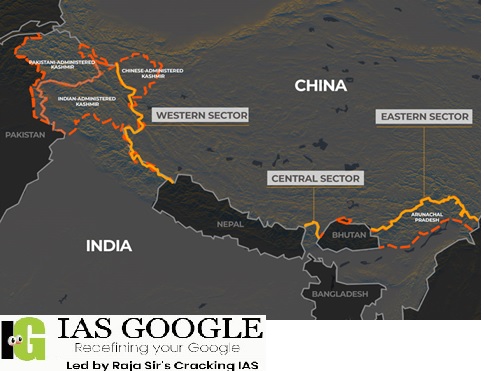 Historical background of Indo-China border conflict
Historical background of Indo-China border conflict
 Issues in different states:
West Bengal:
Issues in different states:
West Bengal:
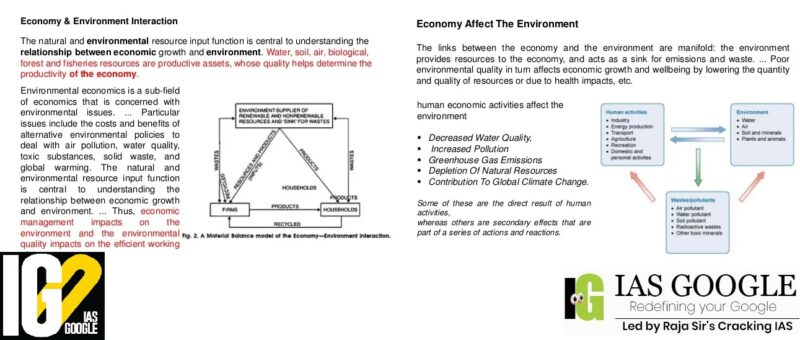 Economic prosperity vs Environmental necessity:
Economic prosperity vs Environmental necessity:
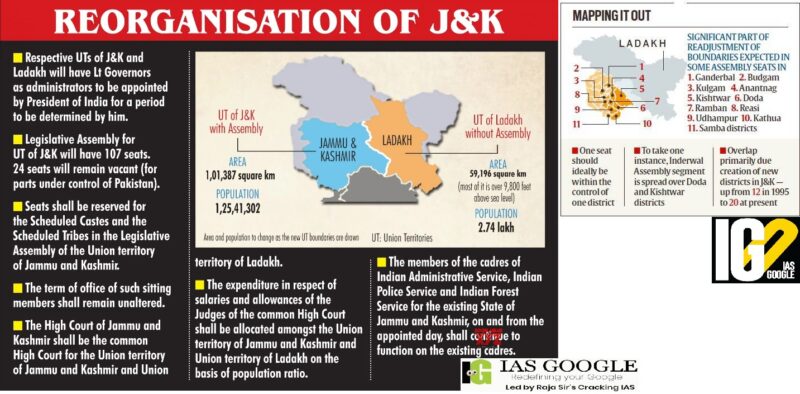 What is Delimitation commission?
What is Delimitation commission?

 Kisan Drones:
Kisan Drones:
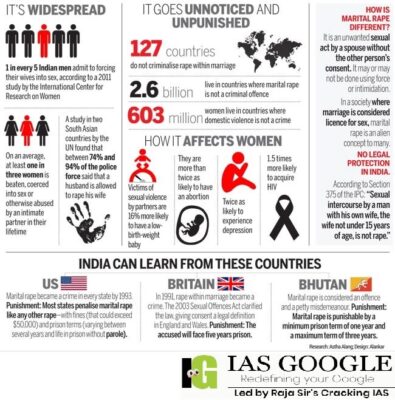
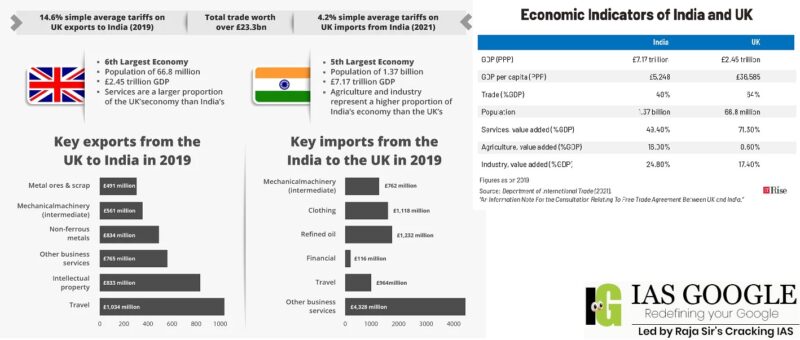
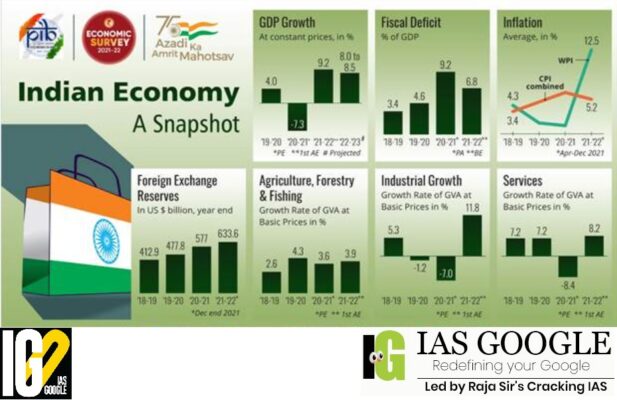 Agile Framework?
Agile Framework?
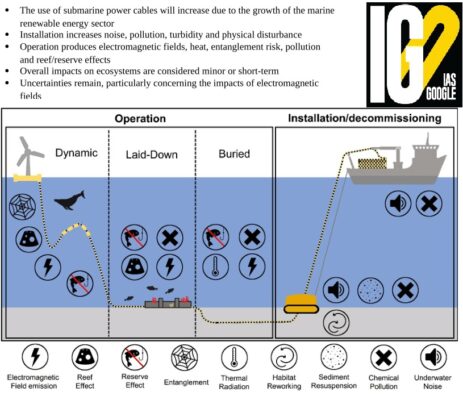 Significance of submarine cables:
Significance of submarine cables:
- Two new Ramsar sites (Wetlands of International Importance), Khijadia Wildlife Sanctuary in Gujarat and Bakhira Wildlife Sanctuary in U.P were also announced on the occasion.
 World Wetlands Day:
World Wetlands Day:
- 2 February as World Wetlands Day: a moment to raise awareness of wetlands’ importance for a sustainable and prosperous future.
- Wetlands Action for People and Nature is the theme in 2022 highlighting the importance of actions to ensure the conservation and sustainable use of wetlands for humans and planetary health.
- World Wetlands Day is an opportunity to engage all stakeholders at all levels – to strengthen and multiply action for wetlands.
- This day also marks the anniversary of the Convention on Wetlands, which was adopted as an international treaty in 1971.
- Wetlands can be thought of as “biological supermarkets.” They produce great quantities of food that attract many animal species.
- Many animals need wetlands for part or all of their life-cycles. In late winter and early spring, for example, adult tiger salamanders migrate from uplands to vernal pools for breeding and egg deposition.
- Scientists also point out that atmospheric maintenance is an additional wetland function. Wetlands store carbon within their live and preserved (peat) plant biomass instead of releasing it to the atmosphere as carbon dioxide, a greenhouse gas affecting global climates.
- Wetlands also play an important role in the hydrologic cycle. Wetlands can receive, store, and release water in various ways, physically through ground water and surface water, as well as biologically through transpiration by vegetation.
- Water purification, Flood protection, Shoreline stabilization, Groundwater recharge and stream flow maintenance etc are other functions of wetlands.
- The Ramsar Convention on Wetlands of International Importance Especially as Waterflow Habitat is an international treaty for the conservation and sustainable use of wetlands.
- It is also known as the Convention on Wetlands.
- It is named after the city of Ramsar in Iran, where the convention was signed in 1971.
- The Ramsar Convention works closely with six other organisations known as international organization partners (IOPs). These are:
-
- Bird Life International
- International Union for Conservation of Nature (IUCN)
- International Water Management Institute (IWMI)
- Wetlands International
- WWF International
- Wildfowl & Wetlands Trust (WWT)
- It is located in sultanpur village on Gurugram-Jhajjar Highway, 15 km from Gurugram, Haryana.
- It has recently been announced as Ramsar site.
- Sultanpur has the typical North Indian climate of harsh summers (up to 46 °C) and cold winters (low of up to 9 °C). Rainy season is short, from July to the end of August.
- The Sultanpur National Park is lush with trees, shrubs and clusters of bougainvillea.
- Every year 90 migratory bird species arrive here in search of feeding grounds and to spend the winter.
- Khijadia, which is part of the Central Asian Flyway, has become the fourth wetland of Gujarat to get the Ramsar tag.
- A freshwater wetland near the coast of the Gulf of Kutch, was formed following the creation of a bund (dike) in 1920 by the then ruler of the erstwhile princely state of Navanagar to protect farmlands from saltwater ingress.
- The sanctuary is now part of Marine National Park, Jamnagar, the first marine national park in the country.
- More than 180 plant species are present, including the critically endangered Indian bdellium-tree (Commiphora wightii).
- A freshwater marsh in the Sant Kabir Nagar district, is the largest natural floodplain wetland of eastern Uttar Pradesh.
- The Sanctuary was established in 1980 and is protected under the Wildlife Protection Act (1972); an “eco-sensitive zone” extends up to a kilometre around its boundary.
- It provides a wintering ground for over 25 species that migrate on the Central Asian Flyway, some of which are threatened or near-threatened such as the endangered Egyptian vulture (Neophron percnopterus), the vulnerable greater spotted eagle (Aquila clanga), common pochard (Aythya ferina) and swamp francolin (Francolinus gularis).
- The study found that marine heatwaves impact the monsoon by reducing the rainfall over the central Indian subcontinent, while enhancing it over the southern peninsula.
 Heatwaves and Marine Heatwaves?
Heatwaves and Marine Heatwaves?
- A heat wave is a period of excessively hot weather, which may be accompanied by high humidity, especially in oceanic climate countries.
- A heat wave is considered extreme weather that can be a natural disaster, and a danger because heat and sunlight may overheat the human body.
- The ocean’s average temperature has increased by 1.5°C in the last century, and for the past 10 years average annual ocean temperatures have been the highest ever recorded.
- In addition to this long-term, persistent warming, discrete periods of extreme regional ocean warming called marine heatwaves (MHWs) are becoming more frequent.
- It causes habitat destruction due to coral bleaching. An underwater survey showed that 85 per cent of the corals in Gulf of Mannar near the Tamil Nadu coast got bleached after marine heatwaves in May 2020.
- It causes destruction of sea grass and kelp forests.
- It will adversely affect fisheries.
- Higher water temperatures associated with MHWs can cause extreme weather events such as tropical storms and hurricanes, and disrupt the water cycle; making floods, droughts and wildfires on land more likely.
- MHWs occur alongside other stressors such as ocean acidification, deoxygenation, and overfishing. In such cases, MHWs not only further damage habitats, but also increase the risk of deoxygenation and acidification.
- Marine heatwaves in the western Indian Ocean and the Bay of Bengal are found to result in drying conditions over the central Indian subcontinent.
- The western Indian Ocean region experienced the largest increase in marine heatwaves at a rate of about 1.5 events per decade, followed by the north Bay of Bengal at a rate of 0.5 events per decade.
- There is a significant increase in the rainfall over south peninsular India in response to the heatwaves in the north Bay of Bengal. These changes are in response to the modulation of monsoon winds by the heatwaves.
- It is imperative to update our weather models to skilfully predict the challenges presented by a warming world.
- Governments must invest in nature-based solutions alongside ambitiously reducing fossil fuel-based emissions to achieve the goals agreed to under the Paris Agreement.
- Funding agencies and governments must build research capacity to monitor MHWs, understand their impacts, and predict future heatwave events.
- Research should aim to establish a temperature baseline which considers species’ thermal limits, and combine physical and biological data to better predict future conditions and highlight biodiversity most at risk.
- Effective responses to MHWs require action from a broad range of stakeholders: policymakers, researchers, the private sector (fisheries, aquaculture, ecotourism), conservationists, and civil society.
- Local management agencies should therefore raise awareness across all stakeholders and implement forecast systems to help achieve a coordinated response.
- Kelp is a type of large brown seaweed that grows in shallow, nutrient-rich saltwater, near coastal fronts around the world.
- They are recognized as one of the most productive and dynamic ecosystems on Earth.
- Kelps function underwater in the same way trees do on land. They create habitat and modify the physical environment by shading light and softening waves.
- Kelp forests also help protect coastlines by decreasing the power of waves during storms and reducing coastal erosion.
- As carbon dioxide (CO2) dissolves in sea water, it forms carbonic acid, decreasing the ocean’s pH, a process collectively known as ocean acidification.
- Ocean acidification has the potential to change marine ecosystems and impact many ocean-related benefits to society such as coastal protection or provision of food and income.
- Increased ocean temperatures and oxygen loss act concurrently with ocean acidification and constitute the ‘deadly trio’ of climate change pressures on the marine environment.
- Changes in species growth and reproduction, as well as structural and functional alterations in ecosystems, will threaten food security, harm fishing industries and decrease natural shoreline protection.
- To combat the worst effects of the deadly trio, CO2 emissions need to be cut significantly and immediately at the source.
- Sustainable management, conservation, restoration and strong, permanent protection of at least 30% of the ocean are urgently needed.
- In Chinese, China calls Arunachal Pradesh Zangnan as the southern part of the Tibetan Autonomous Region (TAR) and claims, “China’s territorial since the ancient time”, which is not accepted by India.
 Historical background of Indo-China border conflict
Historical background of Indo-China border conflict
- The constant border tensions and subsequent disputes between India and China are simply because of the ‘absence of definite and agreed-upon borders’ that demarcates the two countries.
- The border conflict between both the countries can be divided into three different sectors:
- the Eastern sector that lies in the proximity of Arunachal Pradesh with Tibet;
- the Western sector, which covers Ladakh with Tibet, along the line of Pakistan-occupied Kashmir with Sinkiang;
- the Middle sector which covers the state of Uttarakhand and Himachal Pradesh with Tibet.
- The frequent border tension in the Eastern sector is due to the infamous McMahon line, signed in 1914 between British India and Tibet as a part of the Shimla Convention.
- After the 1962 Indo-China war, China considers Arunachal Pradesh as Zangnan, as South Tibet.
- India and China have signed several border agreements including Border Peace and Tranquillity Agreement (BPTA) in 1993, Border Defence Cooperation Agreement (BDCA) after Daulat Beg Oldi Standoff in 2013.
- A series of skirmishes such as Chumar Standoff in 2014, Burtse in 2015, Doklam in 2017, Galwan skirmish 2020, current impasses in Eastern Ladakh.
- Arunachal Pradesh is one of India’s most strategically important states because of its border with many South Asian nations and China’s TAR.
- After China established TAR in 1965, China’s keen interest is to control and occupy the Tawang district because it is bordering with Tibet and Bhutan and entry point to India’s northeast.
- China’s future goal is to occupy Tibet’s five fingers, that is Ladakh, Sikkim, Arunachal Pradesh, and Bhutan.
- Not only claiming the Indian territory, but China is also trying to legitimise these places by renaming them in Chinese characters.
- Newly constructed villages in Arunachal Pradesh can be used as “extended troop cantonments” against India at the time of standoff.
- China tries to garner villagers’ support, and its final aim is to transform the demography of the people living in the area.
- Under its expansionist policy, China will further lay claim to other parts of India along the LAC, including Aksai Chin, Uttarakhand, Himachal Pradesh and more portions of Arunachal Pradesh.
- India must re-examine its policy regarding boundary issues with China.
- India must upgrade its border management programmes by increasing the number of personnel, building optical fibre cable (OFC) to improve communication in long distances, installing high speed-connectivity including 4G/5G and hybrid surveillance to assist military personnel in logistics, intelligence and other related parameters on the border.
- Border area in Arunachal Pradesh is most underdeveloped, neglected and disconnected from other parts of the state due to poor connectivity and infrastructure. The government must allocate adequate budget to build all-weather roads, railways, progress digital connectivity and improve the living standard of the people as it is done by China through subsidising for village development.
- Tourism is another platform where the government needs to pay its state attention. Inner Line Permit (ILP) should be relaxed for religious tourists from Southeast Asian nations who wish to visit Tawang’s Monastery, the second biggest after Lhasa.
- Maintaining a healthy and accountable relationship with people in the area is needed. Providing awareness among the masses about China’s actions in the border is essential from time to time.
 Issues in different states:
West Bengal:
Issues in different states:
West Bengal:
- Mr. Dhan Khar’s constant tirade against Chief Minister Mamta Banerjee her on Twitter.
- Summoning the Chief Secretary and the Director General of Police on a regular basis, and when they do not turn up, taking to Twitter and often tagging the Chief Minister.
- He has withheld assent to the Howrah Municipal Corporation (Amendment) Bill 2021, delaying polls to the civic body.
- In Maharashtra, Governor Bhagat Singh Koshyari has stalled the election of Speaker since the post felt vacant in February 2021.
- He has taken umbrage over the amendments in the legislative rules for holding the Speaker’s election through voice vote instead of secret ballot. The Governor’s view that the State Assembly cannot decide its own rules is unacceptable to the ruling coalition, but is being cheered by the Opposition BJP.
- Mr. Koshyari had in the past batted for the BJP, supporting its demand for a special session of the Assembly on women’s safety and security. He had refused to accept the recommendation of the Council of Ministers on the nomination of 12 members to the Legislative Council, until the matter reached the High Court.
- In Tamil Nadu, Governor R.N. Ravi has not acted upon the T.N. Admission to Undergraduate Medical Degree Courses Bill, adopted by the Assembly in September 2021.
- The Governor is required to either send it to the President of India for approval or return it for reconsideration by the Assembly, but the indefinite delay in taking a decision amount to undermining the legislature, and is unjustifiable.
- The Bill relates to a question of State-Centre relations, as it proposes to dispense with the National Eligibility cum Entrance Test (NEET) for medical graduate admissions in the State. NEET has been criticised for curtailing State powers, and the Governor’s delay in processing the Bill is only aggravating the situation.
- In cases of delaying in taking actions with respect to West Bengals Howrah Municipal Corporation (Amendment) Bill and Tamil Nadu governments (T.N. Admission to Undergraduate Medical Degree Courses Bill), he is guarded by:
- Article- 200: The provision of this article says, when a Bill is passed by the state legislature and presented to the Governor, He may assent, withhold his assent or reserve for President or return the Bill (if not a Money Bill) “as soon as possible”.
- The term “as soon as possible” is vague this has paved the way for misuse.
- Advantage for the Governor is there is no provision of impeachment for violation of Constitution as such for President.
- Though Art- 163: says Governor to exercise his functions on the aid and advice of the Council of Ministers.Art-163(2) on Governor’s discretion shall not be questioned in the court that he ought or ought not to have acted in his discretion, this guards him.
- Article 178 for state Assemblies state that these Houses “shall, as soon as may be”, choose two of its members to be Speaker and Deputy Speaker.
- The Constitution neither sets a time limit nor specifies the process for these elections. It leaves it to the legislatures to decide how to hold these elections. In state legislatures, the Governor sets a date for the election of the Speaker, and it is the Speaker who decides the date for the election of the Deputy Speaker. The legislators of the respective Houses vote to elect one among themselves to these offices.
- Except fixing the date no other provision is given to the Governor, however the term “as soon as may be” is vague.
- A nominated Governor will not be working for the welfare of the state and would not be able to understand the special needs.
- An appointed Governor under the instructions of the Centre might like to run the government against the wishes of the cabinet.
- If the Governor were to be elected by direct vote, then he might consider himself superior to the chief Minister and may lead to friction and as we have adopted a Parliamentary system of Government prescribed by the Constitution, the Governor was to be a Constitutional head of the state, the real power being vested in the Ministry responsible to the legislature.
- The "Punchhi commission - 2010" recommended that there should be a provision for the impeachment of the governor by the state legislature.
- The state chief minister should have a say in the governor’s appointment.
- The "Punchhi commission - 2010" recommended that Articles 355 & 356 be amended.
- The Sarkaria Commission (1988) recommended that Article 356 should be used in very rare cases when it becomes unavoidable to restore the breakdown of constitutional machinery in the State.
- Recommendations have also been given by the Administrative Reforms Commission (1968), Rajamannar Committee (1971) and Justice V. Chelliah Commission (2002).
- S.R. Bommai Judgment (1994): The case put an end to the arbitrary dismissal of State governments by a hostile Central government.
- The verdict ruled that the floor of the Assembly is the only forum that should test the majority of the government of the day, and not the subjective opinion of the Governor.
- The Supreme Court in the Nabam Rabia judgment (2016) ruled that the exercise of Governor’s discretion Article 163 is limited and his choice of action should not be arbitrary or fanciful.
- Governor’s Discretion Should Be Only Her Discretion: For the smooth functioning of government, it is equally essential that the governor must act judiciously, impartially and efficiently while exercising his discretion and personal judgment.
- Strengthening of Federalism: In order to check misuse of the office of governor, there is a need to strengthen federal setup in India.
- In this regard, the Inter-State council and the role of Rajya Sabha as the chamber of federalism must be strengthened.
- Reform the Method of Appointment of Governor: The appointment can be made from a panel prepared by the state legislature and actual appointing authority should be the Inter-state Council, not the central government.
- Code of Conduct for Governor: This 'Code of Conduct' should lay down certain 'norms and principles' which should guide the exercise of the governor's 'discretion' and his powers which he is entitled to use and exercise on his judgment.
- Some of these issues may require debate and discussion before resolution. But any imperial overtone of Governors can only do harm to the constitutional scheme of things.
 Economic prosperity vs Environmental necessity:
Economic prosperity vs Environmental necessity:
- The national dreams of economic prosperity and global competitiveness, underwritten by AI, there is also an environmental cost and the nexus of technology, development, growth and security a cost that comes a is environmental impact set by powerful actors.
- The part that artificial intelligence plays in climate change has come under scrutiny, by developing tools to quantify the carbon cost of machine learning models and by switching to a sustainable artificial intelligence infrastructure the ill-effects can be reduced.
- Starting from extracting metals from the Earth and the resulting environmental effects, to the sweatshops of programmers that keep the system going, to the personal data about the user that the device gathers, they offered a visual picture of AI’s impact on the environment and human rights.
- It has become an urgent matter to consider the role of AI technology in the climate crisis. The United Nations has called climate change a “defining crisis of our time “and, according to the Climate Reality Project, 97% of climate scientists concur that human activity is its main driver.
- The key mitigation pathways to avoiding a global environmental catastrophe include bringing emissions to zero by the middle of the twenty-first century, and limiting the average global warming to 1.5 °C.
| It can help reduce the effects of the climate crisis, such as in smart grid design, developing low-emission infrastructure, and modelling climate change predictions. | AI is itself a significant emitter of carbon. |
- The researchers at the University of Massachusetts Amherst analysed various natural language processing (NLP) training models and estimated that the carbon footprint of training a single big language model is equal to around 300,000 kg of carbon dioxide emissions. This is of the order of 125 round-trip flights between New York and Beijing, a quantification that laypersons can visualize. This is only a part of the problem.
- Developed countries are way ahead: Few developed economies possess certain material advantages right from the start. They frame the rules and they have an advantage in research and development, and possess a skilled workforce as well as wealth to invest in AI.
- Example: North America and East Asia alone account for three-fourths of global private investment in AI, patents and publications.
- There is an emerging challenge at the nexus of AI and climate change that could deepen this inequity.
- The energy use of training and operating large AI models is one.
- In 2020, digital technologies accounted for between 1.8% and 6.3% of global emissions.
- AI development and adoption across sectors has skyrocketed, as has the demand for processing power associated with larger AI models.
- But governments of developing countries see AI as a silver bullet for solving complex socio-economic problems, that will result in growing share of AI in technology-linked emissions in the coming decades.
- UNESCO in November 2021 adopted the Recommendation on the Ethics of Artificial Intelligence, calling on actors to “reduce the environmental impact of AI systems, including but not limited to its carbon footprint.”
- Technology giants like Amazon, Microsoft, Alphabet and Facebook have announced “net zero” policies and initiatives.
- These initiatives are a good sign, but they only scratch the surface.
- Global AI governance and climate change policy (historically) are contentious, being rooted in inequitable access to resources.
- AI’s social and economic benefits are accruing to a few countries,
- Skewed participation in policy making: Most of the current efforts and narratives on the relationship between AI and climate impact are being driven by the developed West.
- Like most nexus issues, the relationship between climate change and AI is still a whisper in the wind.
- It is understudied, not least because the largest companies working in this space are neither transparent nor meaningfully committed to studying, let alone acting, to substantively limit the climate impact of their operations.
- Mandate transparency, account for the entire tech ecosystem, watch for rebound effects, make non-energy policy a standard practice, integrate tech and climate policy, curb the use of AI to extract fossil fuels, and address AI’s impact on climate refugees.
- To tackle in reducing AI’s climate impact is to quantify its energy consumption and carbon emission, and to make this information transparent.
- The material details of the costs of large-scale AI systems are vague in the social imagination, to the extent that a layperson might think that building a machine learning (ML)-based system is a simple task. Part of the enigma lies in the absence of a standard of measurement.
- Governments of developing countries, including India should assess their technology-led growth in the context of AI’s climate costs.
- Advantage for developing countries they are not plagued by legacy infrastructure it would be easier for them to “build up better”.
- Developing countries AI-led growth paradigm can be sustainable, resource efficient and upgraded than their Western counterparts.
- In the end “a lot of what the climate fight is about is that we need solidarities, and people on the ground, across the world to making efforts to create this kind of transparency.”
 What is Delimitation commission?
What is Delimitation commission?
- Delimitation literally means the act or process of fixing limits or boundaries of territorial constituencies in a country or a province having a legislative body.
- The job of delimitation is assigned to a high-power body. Such a body is known as Delimitation Commission or a Boundary Commission.
- The Delimitation Commission in India is a high-power body whose orders have the force of law and cannot be called in question before any court.
- The orders come into force on a date to be specified by the President of India in this behalf.
- The copies of its orders are laid before the House of the People and the State Legislative Assembly concerned, but no modifications are permissible therein by them.
- The main task of the commission is redrawing the boundaries of the various assembly and Lok Sabha constituencies based on a recent census.
- If the members of the Commission have differing opinions, then the decision of the majority will be taken into consideration.
- The Commission releases draft proposals to the public through the Gazette of India and the official gazettes of states, and also in regional language newspapers.
- It also conducts public sittings wherein the public’s opinion is heard through written or oral representations.
- The Delimitation Commission is a panel with legislative backing that operates independently of the government and political parties.
- It determines the number and boundaries of constituencies in order to have a population that is nearly equal in all constituencies.
- Identifies seats reserved for Scheduled Castes and Scheduled Tribes in areas with a sizable population.
- In 2021, the Union Ministry of Agriculture and Farmers Welfare brought out a standard operating procedure for spraying pesticides and nutrients through drones.

 Kisan Drones:
Kisan Drones:
- The Centre will promote Kisan Drones, chemical-free natural farming, public-private partnerships for the delivery of digital and high-tech services to farmers across the country during the financial year 2022-23.
- The use of Kisan Drones to be promoted for crop assessment, digitization of land records, spraying of insecticides and nutrients.
- The use of Unmanned Aerial Vehicles (UAVs) commonly known as drones have great potential to revolutionize Indian agriculture and ensure country’s food security.
- It will help to reduce human exposure to poisonous chemicals.
- It will help to digitise land records. These flying objects will survey the land, the government proposed, and officials can use the data to match with recorded information, according to the plan.
- Drones and sunshine industries such as artificial intelligence, geospatial systems, semiconductors, space economy, genomics and pharmaceuticals, green energy and clean mobility systems will receive attention.
- It has the potential to assist sustainable development at scale and modernise the country.
- They provide employment opportunities for youth, and make Indian industry more efficient and competitive.
- Start-ups supporting farmer-producer organisations (FPO), machinery for farmers on a rental basis and information technology-based services will be strengthened.
- The formation of Farmer Producer Organisation (FPOs) and the Agriculture Infrastructure Fund (AIF) will bring about a revolution in the lives of small farmers.
- Aim will be of Doubling Farmer's Income by 2022.
- The SOP for drone regulation for pesticide application covers important aspects like statutory provisions, flying permissions, area distance restrictions, weight classification, overcrowded areas restriction, drone registration, safety insurance, piloting certification, operation plan, air flight zones, weather conditions, SOPs for pre, post and during operation, emergency handling plan.

- Exception 2 to S. 375 IPC states that sexual intercourse by a man with his own wife, the wife not being under 18 years of age, is not rape.
- The 2005-06 National Family Health Survey (NFHS) found that of the 80,000 women interviewed, 93% stated that they had been sexually abused by their current or former husbands.
- Ten years later, 2015-16 NFHS showed no improvement, as the data estimated that 99.1% of sexual assault cases go unreported and that the average Indian woman is 17 times more likely to face sexual violence from her husband than from others.

- That they met in the middle of India’s second wave of COVID-19, shows their determination to turn their shared political will into action.
- As part of that transformation, the two leaders declared their ambition to more than double bilateral trade by 2030, which totalled over £23 billion in 2019.
 Agile Framework?
Agile Framework?
- It is a framework for project and policy implementation that is considered highly efficient for getting work done. It was developed in 2001 and is based on 12 principles which include customer satisfaction, collaboration, adapting to change, feedback loops, breaking project silos, etc.
- This involves analysis of the issue, detailed planning and meticulous implementation. India’s earlier five-year plans were based on this.
- Waterfall Framework is linear and is developed systematically from phase to phase.
- It is said that this approach works best for projects with concrete timelines, well-defined deliverables and little uncertainties.
- The Waterfall methodology is a sequential development process that flows like a waterfall through all phases of a project (analysis, design, development, and testing, for example), with each phase completely wrapping up before the next phase begins.
- Real time availability of data allows constant monitoring of a policy at a time when there are lot of uncertainties. This helps governments to adopt the Agile Framework.
- Short term policy responses can be tailored to an evolving situation rather than what a model may have predicted.
- Projects implemented through Agile Framework are four times cheaper than a similar project implemented through Waterfall Strategy.
- Dynamically changing environment makes requirement to change in the software development process an inevitable task.
 Significance of submarine cables:
Significance of submarine cables:
- Submarine cables or underwater sea cables are optical fibre cables that are laid on the seabed using ships and connect landing ports.
- In these fibre-optic cables, data transmission happens through light waves being fired at rapid rates using a thick glass fibre between multiple transmitters, repeaters and receivers.
- The financial transactions amount to around US$ 10 trillion daily through these networks of cables.
- These cables are owned by consortium telecoms firms that manufacture, deploy and maintain submarine cables and can be state-owned, private or with joint rights.
- Submarine cables are neglected under the UN Convention on the Law of the Sea and needs sustained international cooperation.
- The major risks to undersea submarines are natural disasters and man-made activities that can be accidental or intentional.
- Instances of aquatic life damaging these cables are also quite rare and natural causes for such faults only account for 10 per cent of the total cases.
- Unintentional human mistakes due to ships and fishing vessels' anchors cause two-thirds of all cable mishaps.
- Lack of route-diversity is, in and of itself, a major vulnerability.
- A darker threat that has resulted from the rise of the non-State malevolent actor in general and the State-sponsored non-State malevolent actor in particular.
- Supplementing undersea cables with other systems like Satellite Communication and Underwater Wireless Communication (UWC) is the key to mitigating submarine cable-related losses.
- 5G wireless networking technique to support radio frequency, acoustic and optical signal carrier will play a significant role in ‘observation of marine life, water pollution, oil and gas rig exploration, surveillance of natural disasters, naval tactical operations for coastal securities and to observe the changes in the underwater environment’ with the proliferation of the Internet of Underwater Things (IoUT).
- Submarine cables are either lightly or heavily armoured, with the breaking strength of these cables varying from a few tonnes to more than 40 tonnes.
- Cables close to shore, where most bottom-trawling occurs, are not only armoured but also buried in the seabed.
- Innovative approaches can be utilised to repair undersea cables instead of using ships that delay the process. Using Autonomous Underwater Vehicles is a faster, cheaper and safer way to fix the cables.









 Latest News
Latest News
 General Studies
General Studies